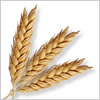Coșul dumneavoastră

 Australia: Grain crops forecast remains upbeat
Australia: Grain crops forecast remains upbeat
A large portion of Australia’s winter cropping area, which includes wheat and barley, is well-positioned for strong harvests heading into the 2025-26 marketing year, according to a report from the Foreign Agricultural Service (FAS) of the US Department of Agriculture, World-Grain.com reported on April 29.
In New South Wales, Queensland, and Western Australia, early seasonal conditions are favorable, indicating potential for strong wheat and barley production. In contrast, much of South Australia and western Victoria remains very dry, with low soil moisture and limited rainfall this fall. However, there is still ample time, through to the end of June, for rainfall to support planting in these regions.
While the FAS is forecasting a decline in wheat and barley production for the upcoming season, output is expected to remain well above the previous 10-year average.
Wheat production is projected at 31 million tonnes, down from an estimated 34.1 million tonnes the previous year but well above the 10-year average of 27.6 million tonnes. Barley is seen at 12.5 million tonnes, a decline from 13.3 million tonnes but 6% above the 10-year average.
Among the world’s top exporters of wheat, shipments in 2025-26 are projected at 23 million tonnes, down 3 million tonnes, mainly on the projected lower production.
The FAS forecasts wheat consumption for 2025-26 at 8.1 million tonnes, up 100,000 tonnes from the previous year. The increase rise primarily is attributed to greater demand from the livestock feed sector.
Wheat used for milling remains relatively stable year to year, the FAS noted, though a growing population, which currently is nearly 27 million, may influence that demand and potentially lead to new investments in milling capacity.
“The livestock industry utilizes a significant portion of feed wheat, particularly in beef cattle feedlots and the poultry sector, followed to a lesser extent by the dairy, swine and sheep industries,” the FAS said. “Poultry feed demand is consistently stable, with gradual increases in line with expanding production. In contrast, swine and sheep feed consumption remains relatively small and has a minimal impact on total wheat demand.”
Barley exports for the world’s top shipper of the grain are forecast at 6.5 million tonnes, down 500,000 from the previous year, reflecting the anticipated dip in production. Similar to wheat, a modest increase in expected consumption to 6.1 million tonnes primarily is driven by expected growth in livestock feed demand, particularly from the beef feedlot sector.
“Although the majority of barley exported to China is feed-grade, industry sources report that a notable portion is used for malting,” the FAS said. “Additionally, China’s recent tariffs on US feed grains (as of early April 2025) are expected to boost demand for Australian barley for the remainder of 2024-25 and into 2025-26.”
Sorghum production is expected to rise slightly to 2.5 million tonnes in 2025-26, marking the fifth consecutive year of above-average output. Australia exports most of its sorghum, and with higher production, exports are forecast to reach 2.4 million tonnes, 9% higher than the previous year’s estimate.
Milled rice production is projected to fall sharply to 230,000 tonnes in the coming marketing year, a 39% decrease from 2024-25 and 31% below the 10-year average. The decline is attributed to a lack of irrigation water.
Înapoi
(libra 0.6914 sec.)





